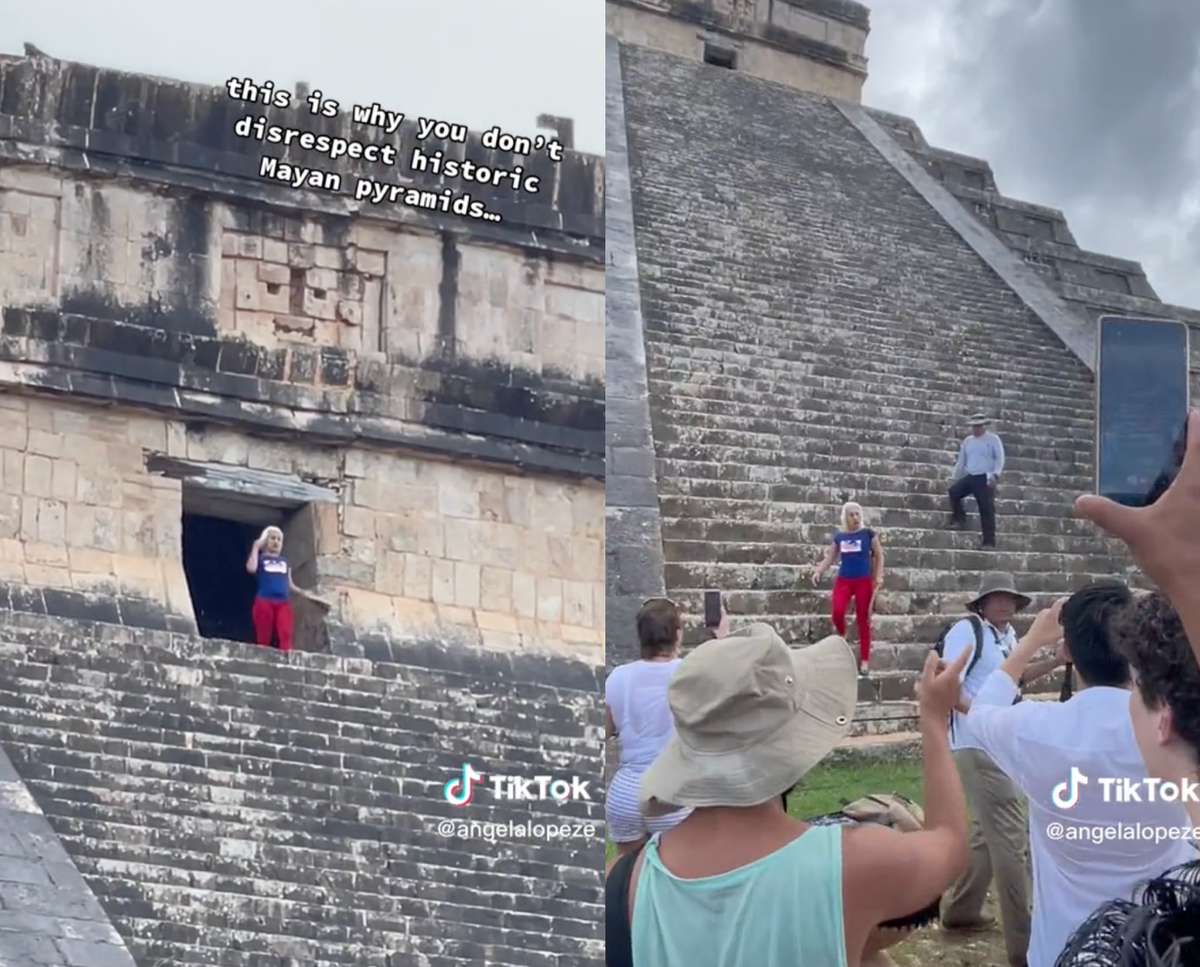This website uses cookies so that we can provide you with the best user experience possible. Cookie information is stored in your browser and performs functions such as recognising you when you return to our website and helping our team to understand which sections of the website you find most interesting and useful.

A tourist was mobbed by onlookers after she was accused of disrespecting Mayan culture by climbing El Castillo, a step-pyramid in Mexico.
In a recent video posted on TikTok by @angelalopeze, that has since circulated on social media, an unidentified woman could be seen climbing the steps of the historical monument, which is known as the Temple of Kukulcán. The pyramid lies in the centre of the Chichen Itza, an archaeological site in Yucatán.
Once the woman made it to the top of the pyramid, she took her hat off and started to dance, prompting a crowd of onlookers standing at the base of the monument to boo. After she’d descended the pyramid, the tourist was reportedly escorted away by security at the archaeological site, while the TikTok video showed onlookers continuing to yell and taunt the woman.
The clip then showed as the tourist attempted to make her way through the crowd of people, during which onlookers could be seen filming her exit and throwing liquids. The woman’s hat was also knocked off by one of the individuals in the crowd, while others could be heard chanting “lock her up” and “jail, jail,” in Spanish.
In the caption of the video, @angelalopeze criticised the tourist, writing: “This is so disrespectful..don’t mess with my Mexican people.”
The viral video has now been reshared on multiple social media platforms, prompting viewers to condemn the tourist for disrespecting Mayan culture and disobeying the monument’s rules. The National Institute of Anthropology and History (INAH) bans visitors from climbing into Chichen Itza’s chambers. As noted by the archaeological spot’s official website, the ban was put in place after an 80-year-old American woman climbed the 91 steps of El Castillo and fell to her death in January 2006.
“It’s about respect for: Old structure, the rules and order established by the people who try to preserve the place [and] culture,” one person wrote on Twitter.
“I visited here. They made it CLEAR that climbing is prohibited because, not only were people abusing the privilege to walk on them, but they would chip off pieces of the structure and take fragments home…or engrave marks in it,” another said. “People have no respect with or without the rule.”
A third added: “Imagine if someone climbed up on the altar in a cathedral and did a rude dance - this pyramid is sacred and that’s what she did.”
The Riviera Maya News reported that the woman was escorted through the mob of angry onlookers by two INAH personnel. The publication also said that she was “arrested by Tinum Municipal Police and fined in accordance with Article 55 of the Federal Law on Archaeological, Artistic and Historical Monuments”.
According to MercoPress, the INAH banned climbing on the Mayan monument in 2008, which is when the security cord around it was first installed. Visitors who break the rule can face fines up to 50,000 Mexican pesos (approximately $2,558) to 100,000 Mexican pesos (approximately $5,115), depending on how much damage is caused to the structure.
In a statement shared with The Independent, and translated to English using Google Translate, the INAH said the tourist did not cause any damage to the El Castillo.
“The reasons why it is not allowed to climb the pyramidal structures were explained to the person and they were made available to the Secretariat of Public Security of the State of Yucatan, where it will comply with the corresponding administrative sanctions,” the statement reads.
“The Ministry of Culture and the INAH call on the general public to respect the provisions established for public visits to archaeological zones and historical sites, which are determined to guarantee an enjoyable and safe experience for attendees and staff, as well as and to guarantee the conservation of heritage sites,” the INAH concluded.



 Africana55 Radio
Africana55 Radio 
